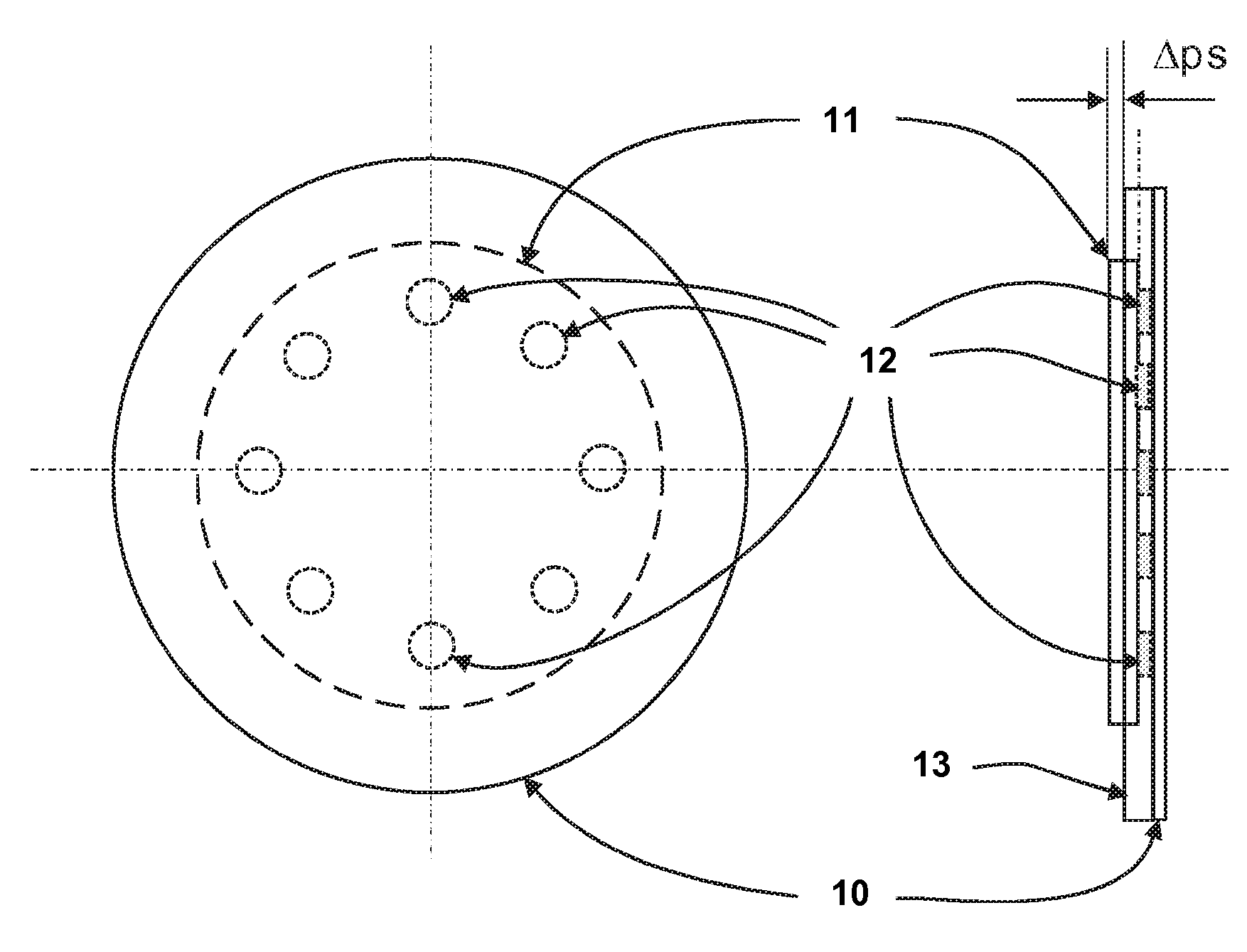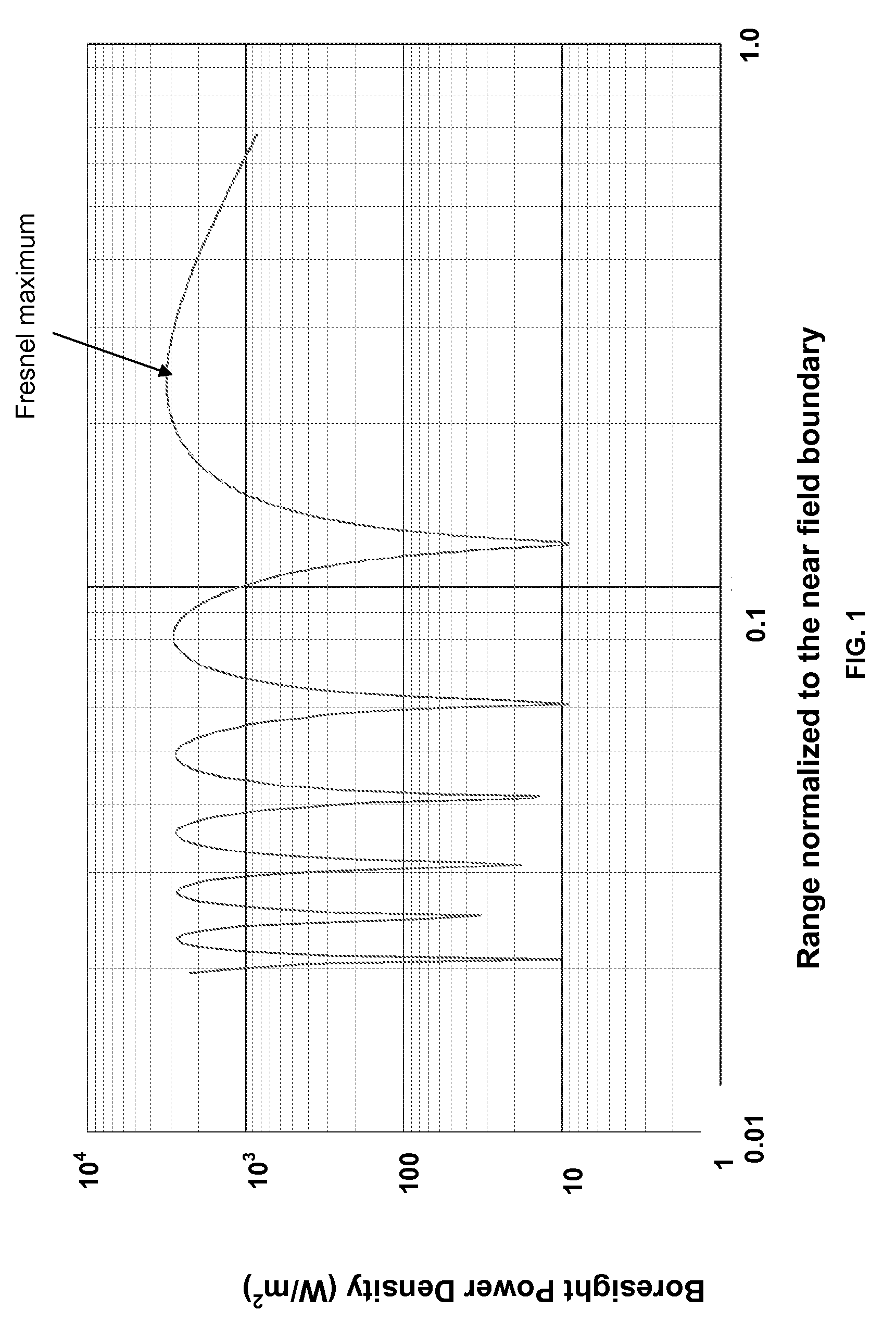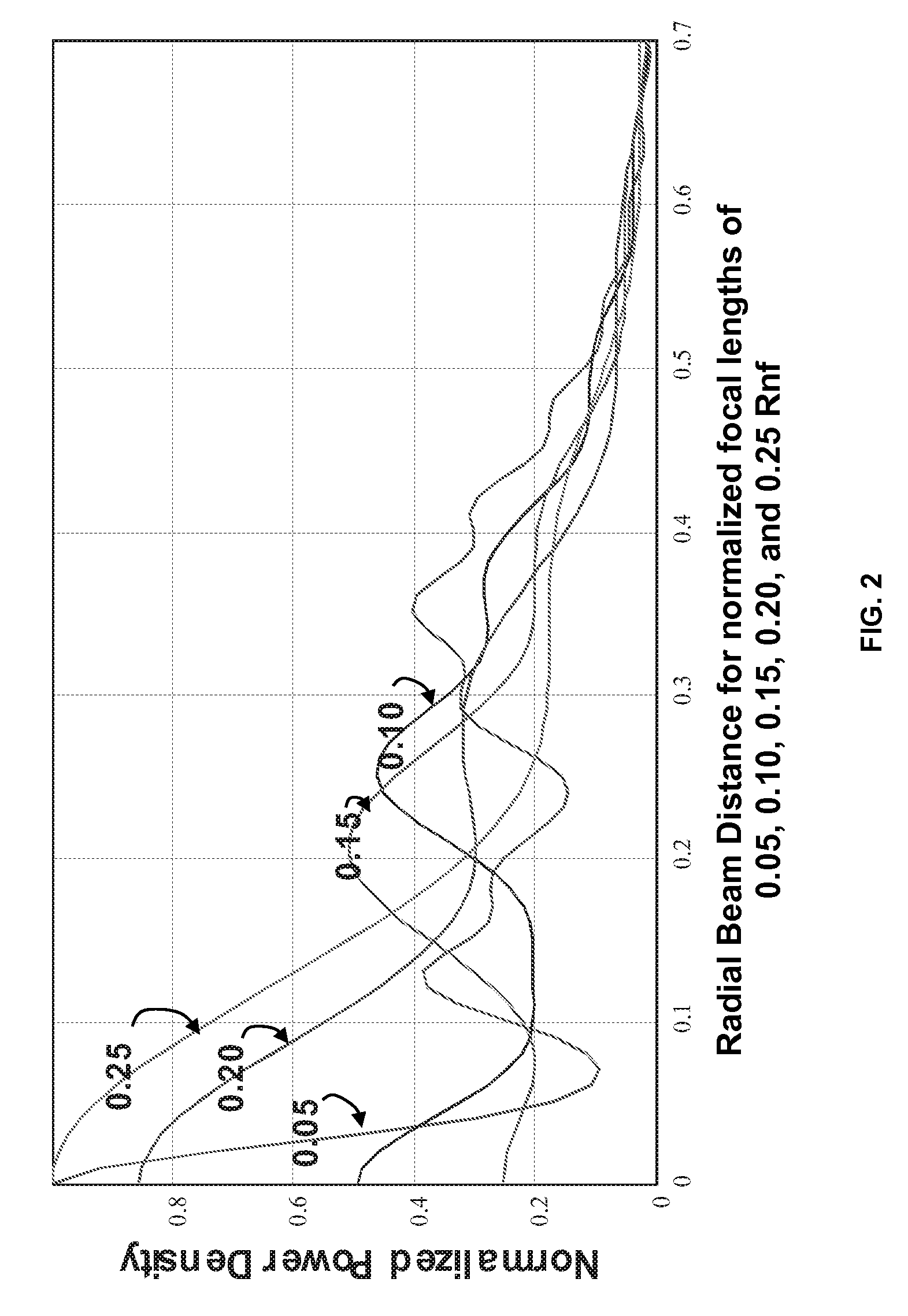Optimization of near field antenna characteristics by aperture modulation
a near field antenna and aperture modulation technology, applied in the field of antennas, can solve the problems of serious degradation of far field performance, unsatisfactory application characteristics, and non-uniform distribution, and achieve the effect of simple and inexpensiv
- Summary
- Abstract
- Description
- Claims
- Application Information
AI Technical Summary
Benefits of technology
Problems solved by technology
Method used
Image
Examples
Embodiment Construction
[0027]The near field of an aperture antenna is comprised of a non-radiating reactive region in the space immediately surrounding the antenna and the radiating near field region referred to as the Fresnel region, the region of primary interest in the following discussion. This region extends from the outer boundary of the reactive region given approximately by:
RrrD3 / λ)
where D is the largest dimension of the antenna and λ is the transmitting wavelength. The outer boundary of the Fresnel region is approximately given by:
Rnf≈D2 / λ
which for the earlier example would give an approximate range of 11 to 333 meters.
[0028]It has been shown above that conventional aperture antennas have non-uniform power density distributions in the near field region and are, therefore, poor in performance for applications that require a concentrated beam that is reasonably uniform over the beam area. It has also been shown that if one can control the focal length or the radius of curvature of the phase front o...
PUM
 Login to View More
Login to View More Abstract
Description
Claims
Application Information
 Login to View More
Login to View More - R&D
- Intellectual Property
- Life Sciences
- Materials
- Tech Scout
- Unparalleled Data Quality
- Higher Quality Content
- 60% Fewer Hallucinations
Browse by: Latest US Patents, China's latest patents, Technical Efficacy Thesaurus, Application Domain, Technology Topic, Popular Technical Reports.
© 2025 PatSnap. All rights reserved.Legal|Privacy policy|Modern Slavery Act Transparency Statement|Sitemap|About US| Contact US: help@patsnap.com



